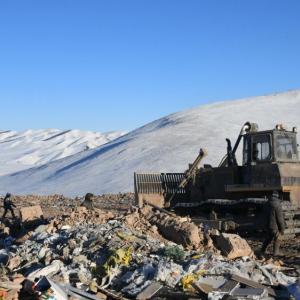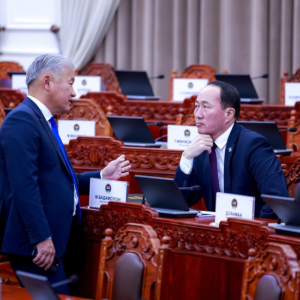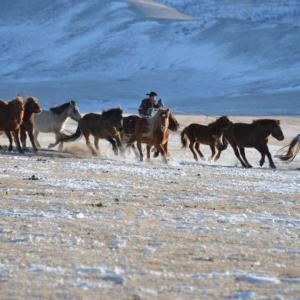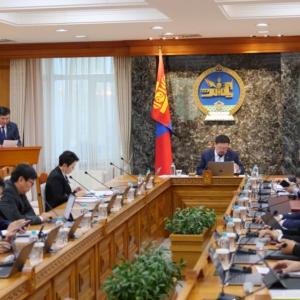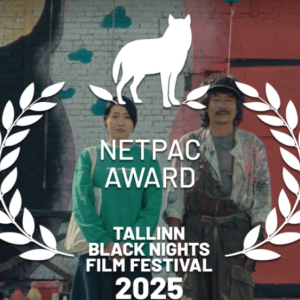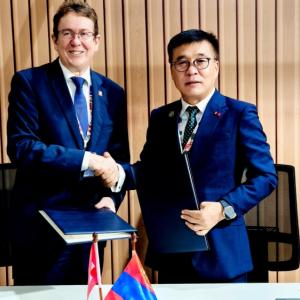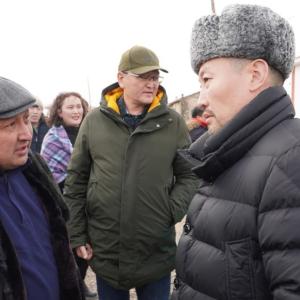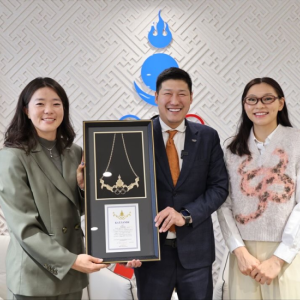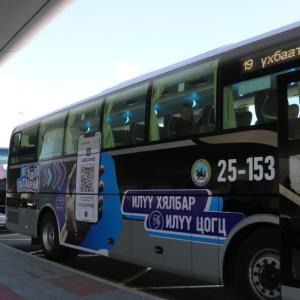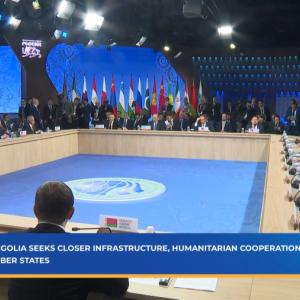Living Safe Together
Society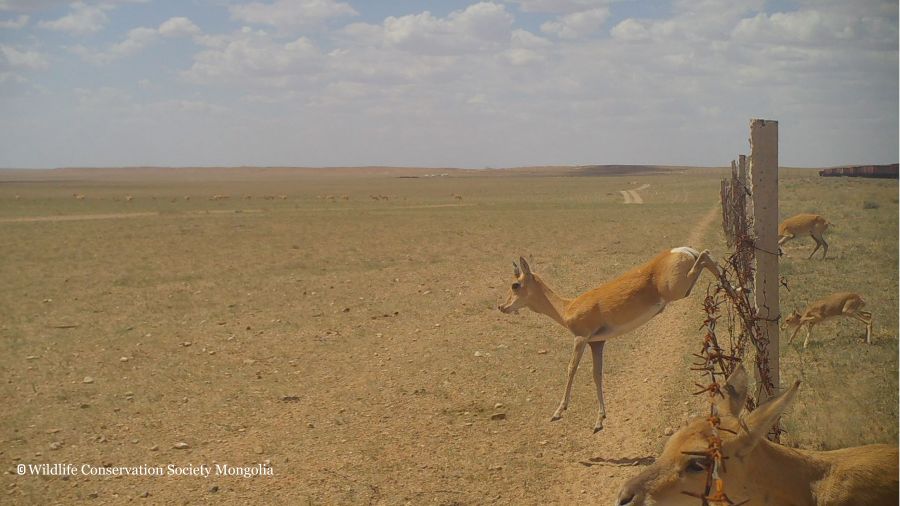
Ulaanbaatar, May 18, 2023/MONTSAME/. Mongolia is proud that it has preserved its wilderness and maintained large intact landscapes for nature. However, existing linear infrastructure (LI), namely railroads and highways, were developed without adequate consideration of their impacts to wildlife, resulting in negative consequences for wildlife migration and animals’ ability to move freely and safely to reach vital resources.
For example, barbed-wire fences, built in 1955 along both sides of the railroad between Ulaanbaatar and Zamiin-Uud, have nearly completely blocked the east-west migrations of Mongolian gazelles, according to published research. As a result, the gazelle populations in most of their ranges on the west side of the railroad are largely diminished. A survey from 2018 revealed that around 8,000 Mongolian gazelles died at the barbed-wire fences along the railroad in the Gobi region. In another incident in 2017, a female snow leopard was hit and killed by a coal truck while crossing a paved road developed for the mine.

The migration and free movement of various large ungulates (species with hooves) in Mongolia—such as the Asiatic wild ass or khulan, goitered gazelles, Mongolian gazelles, Argali sheep, Siberian ibex, and Mongolian saiga—is crucial to allow them to adapt to changing conditions for their survival. LI, such as roads and railways, can have particularly significant impacts on biodiversity by impeding wildlife movement, fragmenting intact natural habitats, and causing widespread land conversion.

LI can not only cause biodiversity and ecosystem decline but can also reduce society’s resilience to climate change, compromise human well-being, and undermine sustainable development. In the case of Mongolia’s larger migratory ungulates, many of their populations are facing serious threats and risks due to LI. Therefore, transport ecology experts recommend that wildlife crossings be developed at least every 10 km in distance along highways and railroads. Additionally, the removal of barbed-wire fences should be listed as a priority action in conservation efforts that address the impacts of LI.
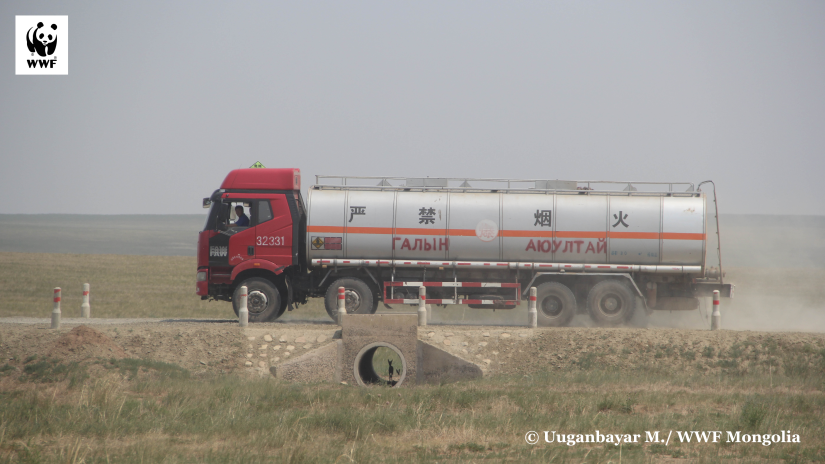
Adopting national standards
In 2013, the Mongolian government established a temporary working group to discuss and propose solutions to reduce the risks to migratory wildlife populations caused by LI. WWF-Mongolia was one of its members and, along with Wildlife Conservation Society (WCS) Mongolia, facilitated the working group’s activities.
After meticulous and lengthy efforts, the working group developed a national standard for wildlife crossings for highways and railroads in the steppe and Gobi Desert areas (MNS 6515:2015) that was approved by the Government of Mongolia (GoM). Later, in 2018, the second standard for highways and railroads in mountainous and forested areas (MNS 6735:2018) was adopted. As a result, Mongolia has become the first country in Asia to adopt two national standards for highway and railway wildlife crossings for large migratory ungulates.
Although Mongolia now has clear standards for wildlife crossings, developers of LI still have an inadequate understanding of these requirements. Thus, for some of the newly developed LI projects, the standards have not been properly implemented. More attention must be given to these shortfalls to increase stakeholders’ awareness and build the capacity of LI developers to implement the standards in future projects. In addition, it may be necessary to retrofit recent LI projects that did not meet the wildlife crossing standards.
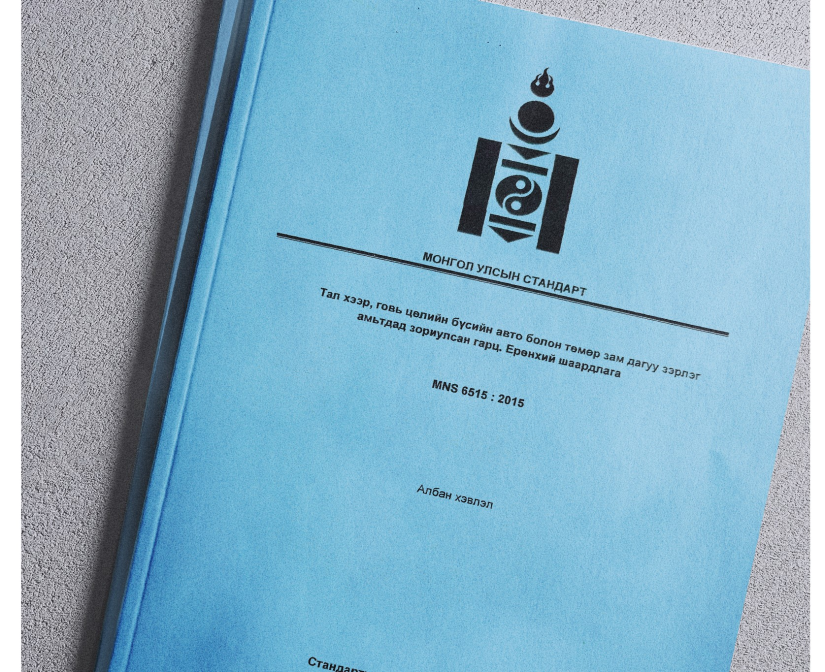
Strengthening protections
The national standards intend to ensure safe seasonal migrations and movements of Mongolia’s globally endangered large ungulates within their distribution ranges in the country. Unfortunately, in a review on the detailed environmental impact assessment of seven LI projects in 2021, the Ministry of Environment and Tourism identified that the implementation of the standards lacked scientific evidence and therefore projects rarely met the requirements.
Since September 2021, WWF-Mongolia has engaged in the Asia’s Linear Infrastructure safeGuarding Nature (ALIGN) Project, funded by the United States Agency for International Development (USAID). The ALIGN team comprises USAID; WWF offices in Mongolia, Nepal, India, and the US; and the Center for Large Landscape Conservation in the US. Together with its ALIGN partners, WWF-Mongolia aims to help the GoM strengthen its policy framework, enhance its partnerships, and increase stakeholders’ capacity to implement natural resource safeguards for LI.
As part of these efforts, WWF-Mongolia has become a member of the GoM’s permanent coordination platform, founded in August 2022. It seeks to continue the efforts and success of the temporary working group, such as in supporting the adoption of wildlife crossing standards. The coordination platform has 19 members including key government LI agencies, WCS, railway companies, and private sector representatives. The coordination platform seeks to resolve current wildlife issues caused by new LI projects so that more wildlife-friendly LI is developed in Mongolia.
Exploring the existing standards
The national standards identify three types of wildlife crossing structures to be established at highways and railroads in the regions: overpass bridge, underpass tunnel, and level crossing.
- Overpasses are often based on an area’s natural terrain and are built so wildlife cross safely over the highway, railroad, or other LI facility. Unfortunately, due to their relatively high cost, no overpass has been built in the country.
- Underpasses are structural tunnels built so wildlife pass safely under highways and railroads. In Mongolia, some of these types of crossings exist along railroads to Tavan Tolgoi, but recent reviews suggest that their numbers are insufficient and many of them are poorly located for wildlife use.
- A level crossing, or at-grade crossing, is designed so animals cross the highway or railroad by creating a gap in the fences on either side of the LI right-of-way. Although not ideal, as the animals are vulnerable to being hit by vehicles and trains, these crossings make the LI permeable for large ungulate migration and movement. As long as traffic and train volumes are low, these may prove effective. In Mongolia, these at-grade crossings are built in 12 spots along the 416 km-long Tavan Tolgoi-Zuunbayan railroad, and 10 are constructed on the Tavan Tolgoi-Gashuun Sukhait railroad. These crossings can help LI meet the wildlife crossing national standard requirements. However, according to recent field reviews, they are improperly designed for effective wildlife movement and migration, being too few in number and too far apart.

Recently, within the USAID-funded project on Asia’s Linear Infrastructure safeGuarding Nature (ALIGN), WWF Mongolia program installed surveillance cameras along "Tavantolgoi-Zuunbayan" railway line. These cameras will help conducting a monitoring of wild animals along 416.1 km "Tavantolgoi-Zuunbayan" railway line, who move around in search of food and waters. Such root data will become a good basis for the planning and construction of wildlife friendly linear infrastructure.

Source: WWF-Mongolia
 Ulaanbaatar
Ulaanbaatar













